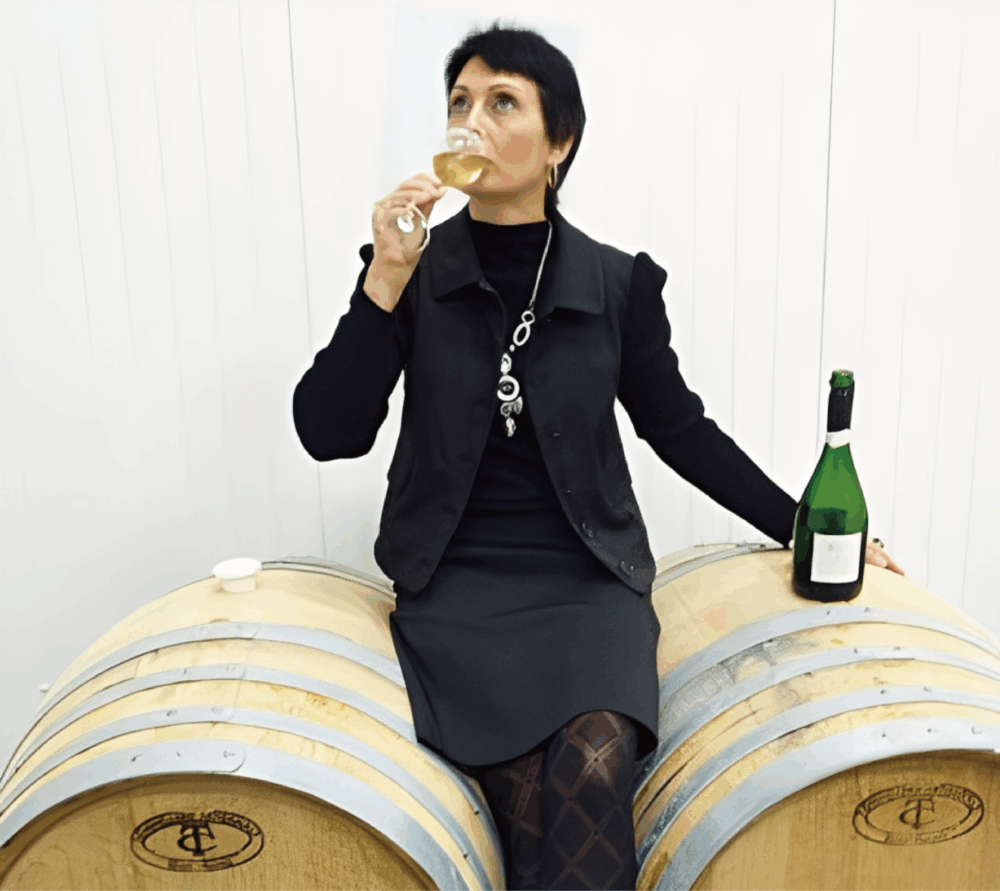Wine List
Nocturne : NV Oeil de Perdrix Brut, 2020 Le Val Cornet Blanc de Noirs Brut
Grand Tasting : NV Le Val Cornet Blanc de Noirs Brut, NV Oeil de Perdrix Brut, NV Brut, 2014 ZH303 Blanc de Blancs Extra Grut
Gala Dinner : NV Brut Double Magnum, 2014 ZH318 Blanc de Noirs Extra Brut Magnum
Nathalie Falmet (pictured) holds degrees in both viticulture and oenology, and she worked as a consulting oenologist before taking over her family estate in 2008. Her 3.2 hectares of vines are located all the way at the eastern edge of the Aube, on the border with the département of the Haute-Marne: 2.8 hectares are in Rouvres-les-Vignes, while the remaining 40 ares are in the nearby village of Arsonval, on the other side of the town of Bar-sur-Aube.
Most of Falmet’s vineyards are planted with pinot noir, as is typical for this sector of Champagne, and she also owns a half-hectare of chardonnay and a 60-are parcel of meunier. All of her vineyards and wines are HVE (Haute Valeur Environnementale) certified, reflecting her commitment to sustainable viticulture practices. Viticulture is lutte raisonnée, with parcels regularly plowed, although she avoids cover crops in her vineyards: “I’m not sure it changes the taste of the wine,” she says, “and it can result in herbaceous flavors, which I don’t like.”
Falmet built a new winemaking facility in 2009, which houses a pneumatic press and a cuvérie. Only the cuvée, or the first portion of the pressing, is used in the estate’s champagnes, with the taille always sold, and most of the wines are fermented in stainless steel. Falmet does own four barriques, which she has used for fermentation, and she’s planning to purchase more in the future. All of her wines go through malolactic, in order to keep sulfur levels as low as possible, maintaining the HVE standards throughout the winemaking process.
Most of Falmet’s champagnes come from a single vintage, with the exception of the non-vintage brut. Her reserve wine is stored in a perpetual cuvée, started in 2009, and this is refreshed each year with the non-vintage blend, which contains a slightly higher percentage of pinot noir than chardonnay. “I don’t use a lot of reserve wine,” she says. “I think if you use it in all of your cuvées, they tend to become stylistically similar. I prefer to maintain the individual personalities of each parcel, each grape variety, each vintage.”


